As the first streaks of sunlight brush their fingers across Western Australia, native flowerheads – still tightly closed from the night before – create a technicolour mosaic; a sea of golden yellows, vibrant pinks and warm oranges, dappled with purple and subtle white.
Rarely, anywhere in the world, can an entire landscape be transformed by an event so surreal and beautiful as WA’s wildflower season. Each year between June and November, a spectacular display emerges from the sunburnt soils as wildflowers bloom to cover thousands of kilometres from the Pilbara to the south-west.
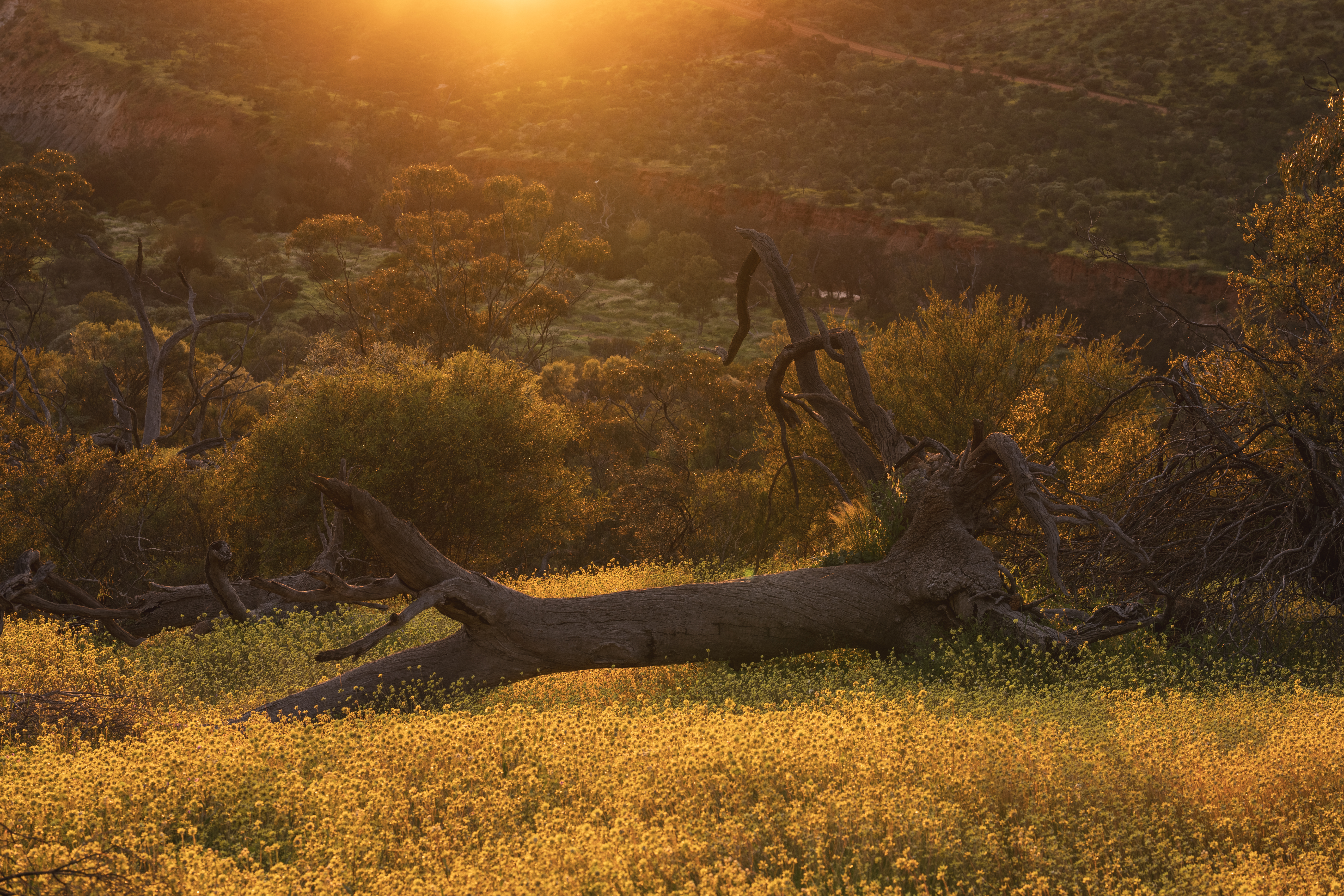
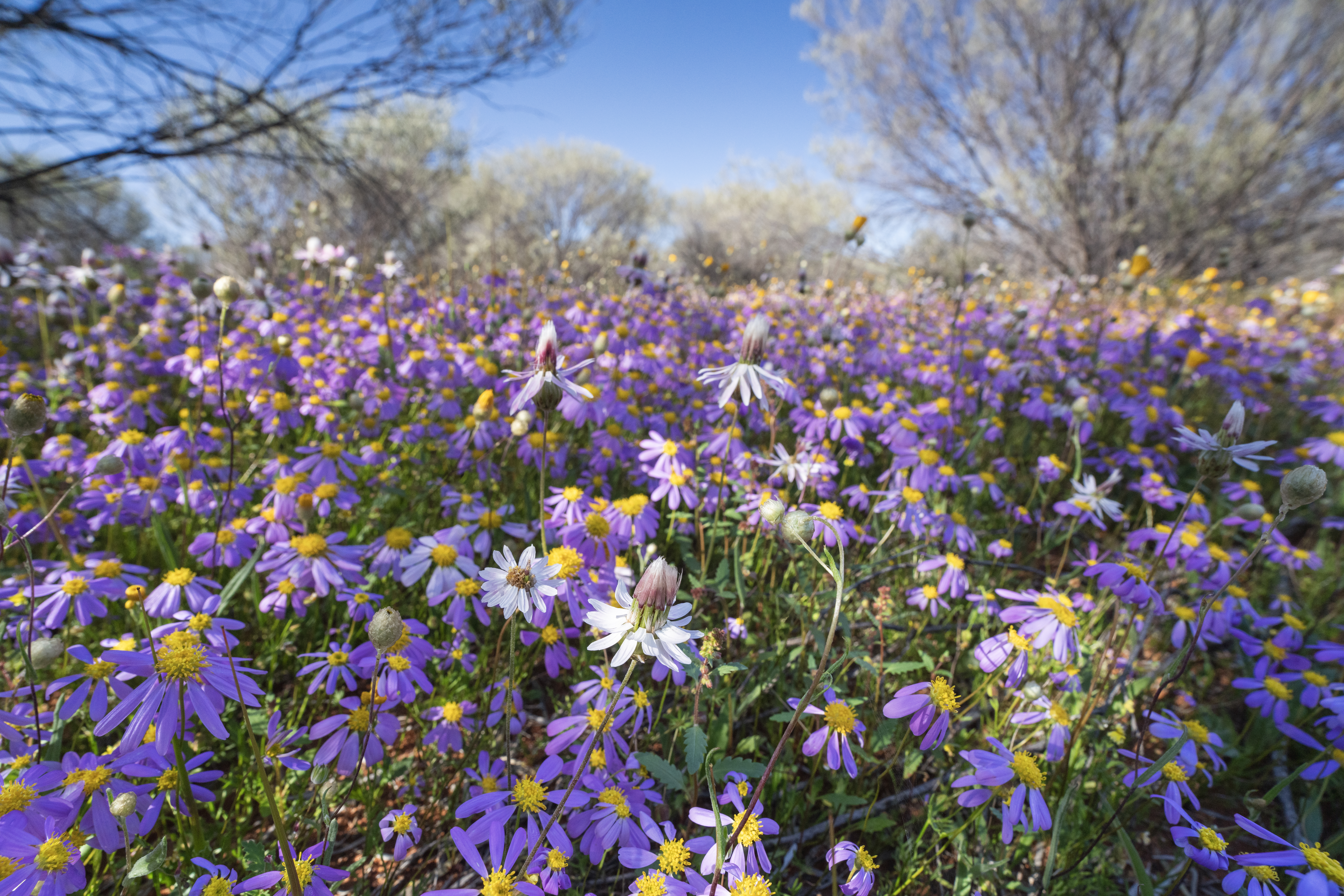
But it’s more than just a spectacle. The wildflowers of WA are ingrained in a cycle of renewal that’s been occurring for millions of years, steeped in the land’s ecology and the culture of the people who live there.
“They’re part of the diversity of the land,” says Brett Loney, president of the Wildflower Society of Western Australia. “They have a relationship with insects and [other] pollinators … and some people have a personal affinity with the wildflowers they’ve spent their lives around. Culturally, they put a lot of value in it.”
After record-breaking winter rains, 2024 has been an exceptional year for WA’s wildflowers, with blooms as rich and plentiful as many people can remember. But despite this amazing display in the ‘Wildflower State’, invasive weeds, land clearing and climate change still pose a danger to these ephemeral beauties, as more and more of the space they once occupied is overrun or destroyed.
WA’s wildflowers have an important ecological role and a rich cultural heritage. The challenge ahead lies in how to best preserve and protect these icons, while celebrating their history, beauty and importance.


Surviving in ancient soil
Western Australia is a hard place for plants to grow. The land is old and by the time flowering plants first evolved and arrived here, eons of wind and weather had already leached most of the nutrients from our ancient soils. But, surrounded by oceans and harsh desert, isolated and undisturbed, WA’s flora diversified and thrived.
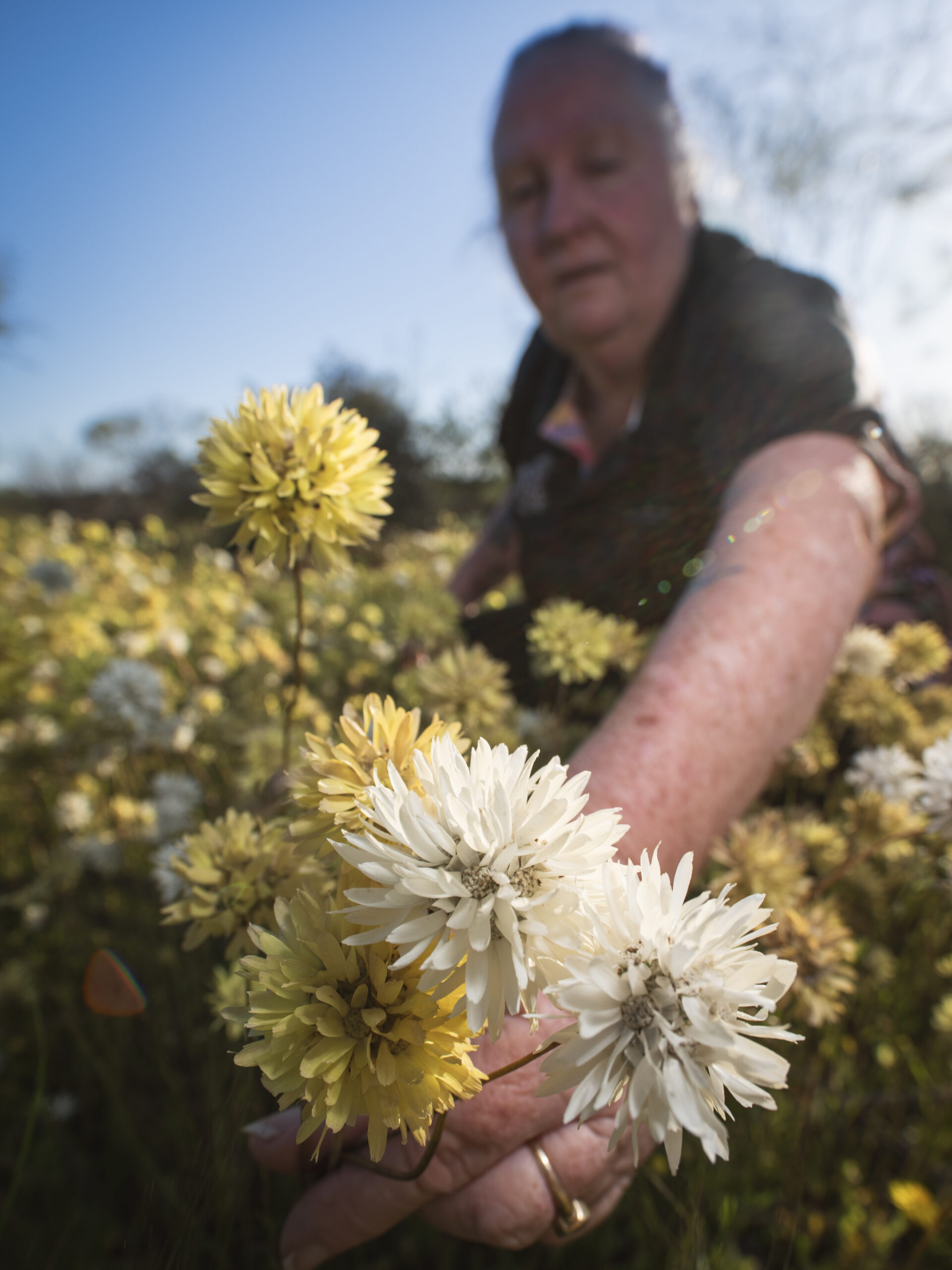
More than 12,000 wildflower varieties evolved, with poor soil quality preventing any one single species from dominating. Though born out of hardship, this diversity now underpins a lush ecological tapestry.
Each year people are drawn to WA’s world famous wildflowers, to breathe in their splendour like a tonic for the body and mind. Tourists journey from around the country and the world to see them. Many families in WA make a yearly pilgrimage to Wildflower Country to witness the extraordinary sight.
For locals, this diverse natural wonder is an inherent part of how people connect with nature – and with each other.
“It just brings it alive around here with the wildflowers,” says Kathryn Park, a volunteer at the Mullewa Community Resource Centre in the heart of the mid-west’s Wildflower Country. During the wildflower season, Kathryn walks the Mullewa Bushland Trail every day to leave marker ribbons near interesting flowers. It’s a service she’s happy to provide for those visiting the town, although she makes sure to always leave some room for discovery. “I don’t want to mark everything, because part of the adventure is finding your own,” she says.
We hike along the trail, waving away flies and keeping our eyes peeled for spider orchids in the undergrowth.


Wildflower tourism is an important source of income for small towns such as Mullewa, about five hours’ drive north of Perth. But for Kathryn, the wildflowers’ value is not just monetary. The flowers are a focal point for the community, a shared identity that brings people together.
“There are people who live elsewhere and they come back to stay during the wildflower season, not just to call in for a day; they come back and stay for a while … and soon everyone starts talking about where the flowers are and where they’re going next,” Kathryn says.
The flowers are a community talking point for many people, a novelty to be enjoyed together. But for others, the wildflowers do something more: they inspire.
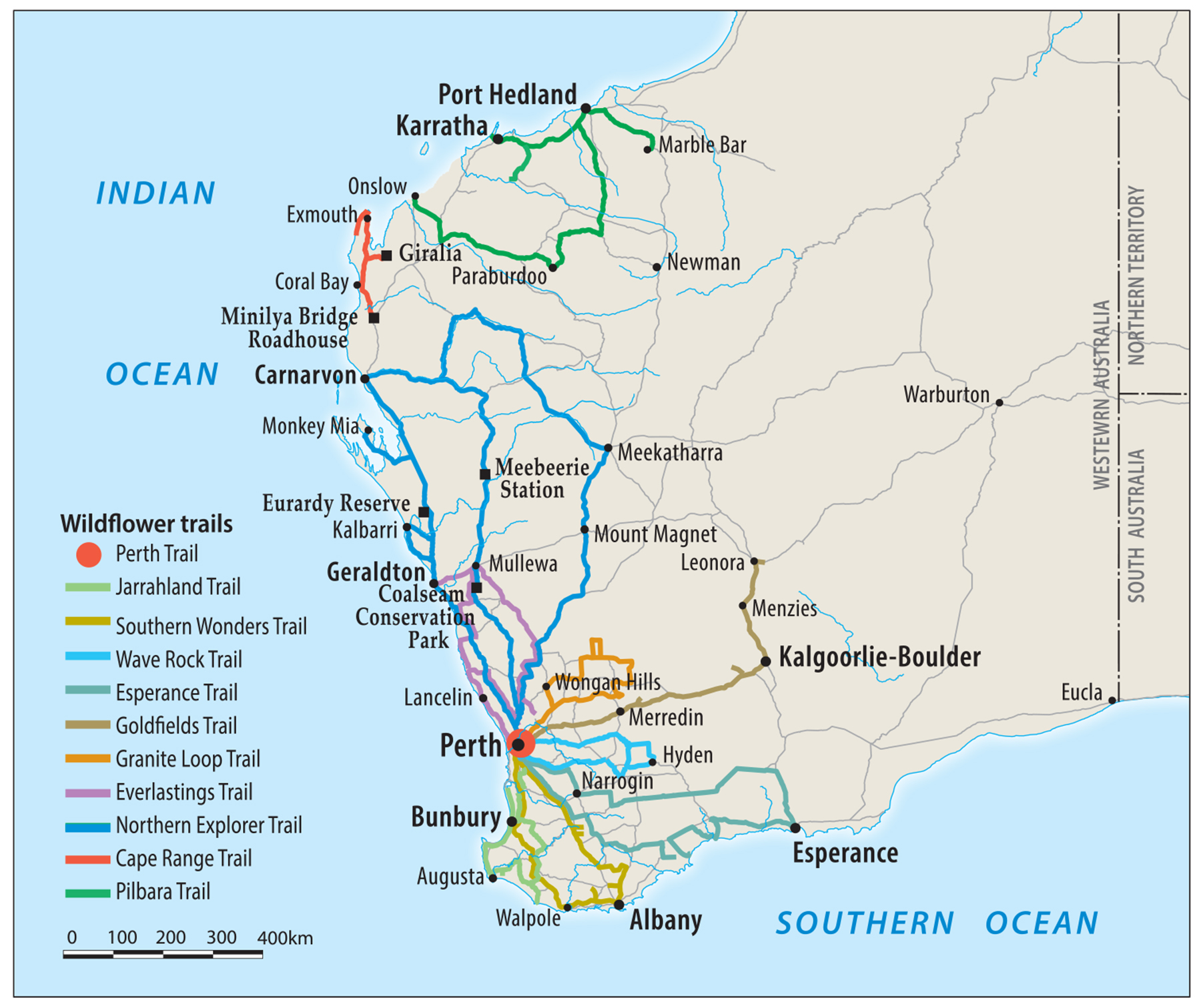
Artistic inspiration
Artists have always drawn inspiration from nature, so it’s no surprise the wildflowers leave an impression on WA artists. Helen Ansell’s work pays homage to the land where she grew up. Each piece evokes the essence of the earth, the sky, the animals and the plants of WA. But once a year, Helen is captivated by the canvas of colour that the wildflowers splash across the land.
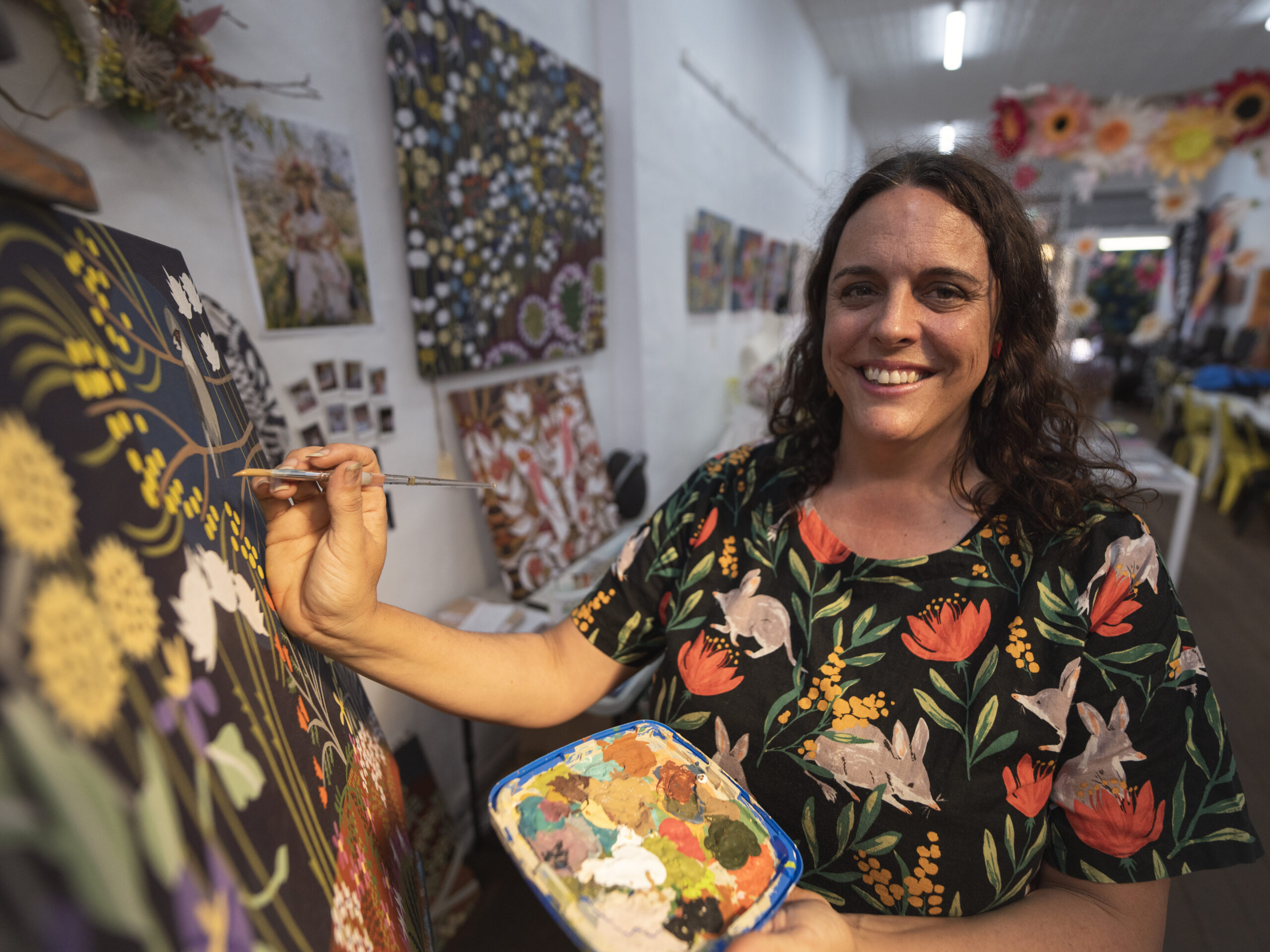
“Everyone is surrounded by their environment … I think you can’t help but be inspired by the flowers here,” Helen says. “There’s just nothing like it anywhere else in the world. I love being able to go out and experience them afresh. I feel very privileged and lucky to be in that situation.”
Part of what makes the wildflowers such an enticing art subject is their temporary nature. As the season changes, Helen’s art changes with it, moving through the different stages of colour and form across the landscape.
“It’s not only different every year, it’s different every week. In a spot that had all pink last week, the yellow has grown. Then you go to another spot and, all of a sudden, these blue flowers are coming up,” Helen says. “Sometimes I start to feel sad when the flowers start to disappear, but then, if we had them all year-round, they wouldn’t be as special.”
Helen’s artworks capture the beautiful, little details found in a natural landscape. “You go somewhere like Kings Park in Perth and obviously it’s beautiful, but it is hand-planted. You come out here and it’s wild. There’ll be spots that the human eye has never even seen … beyond the fence line or down the road. It’s just there, in all its glory.”
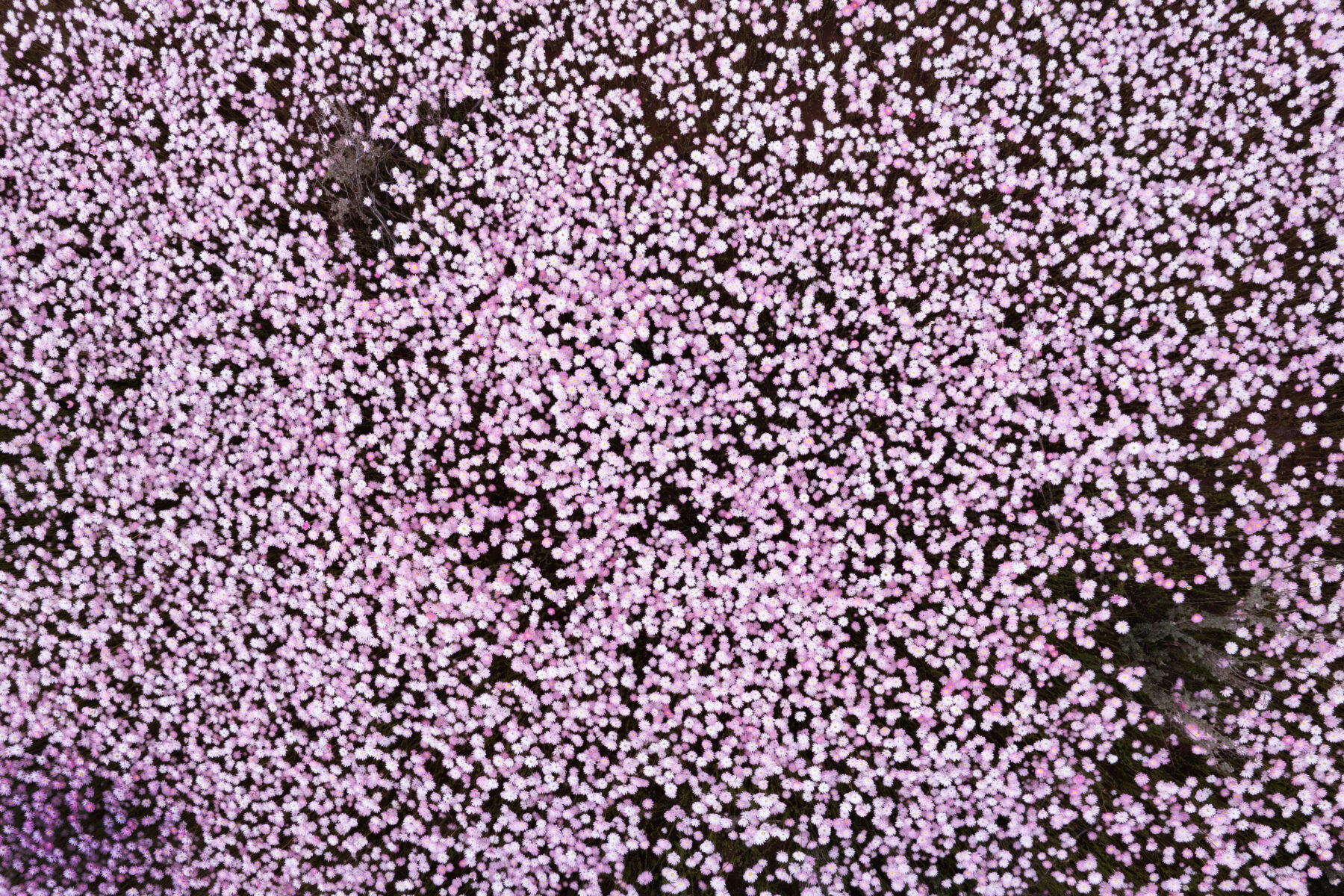
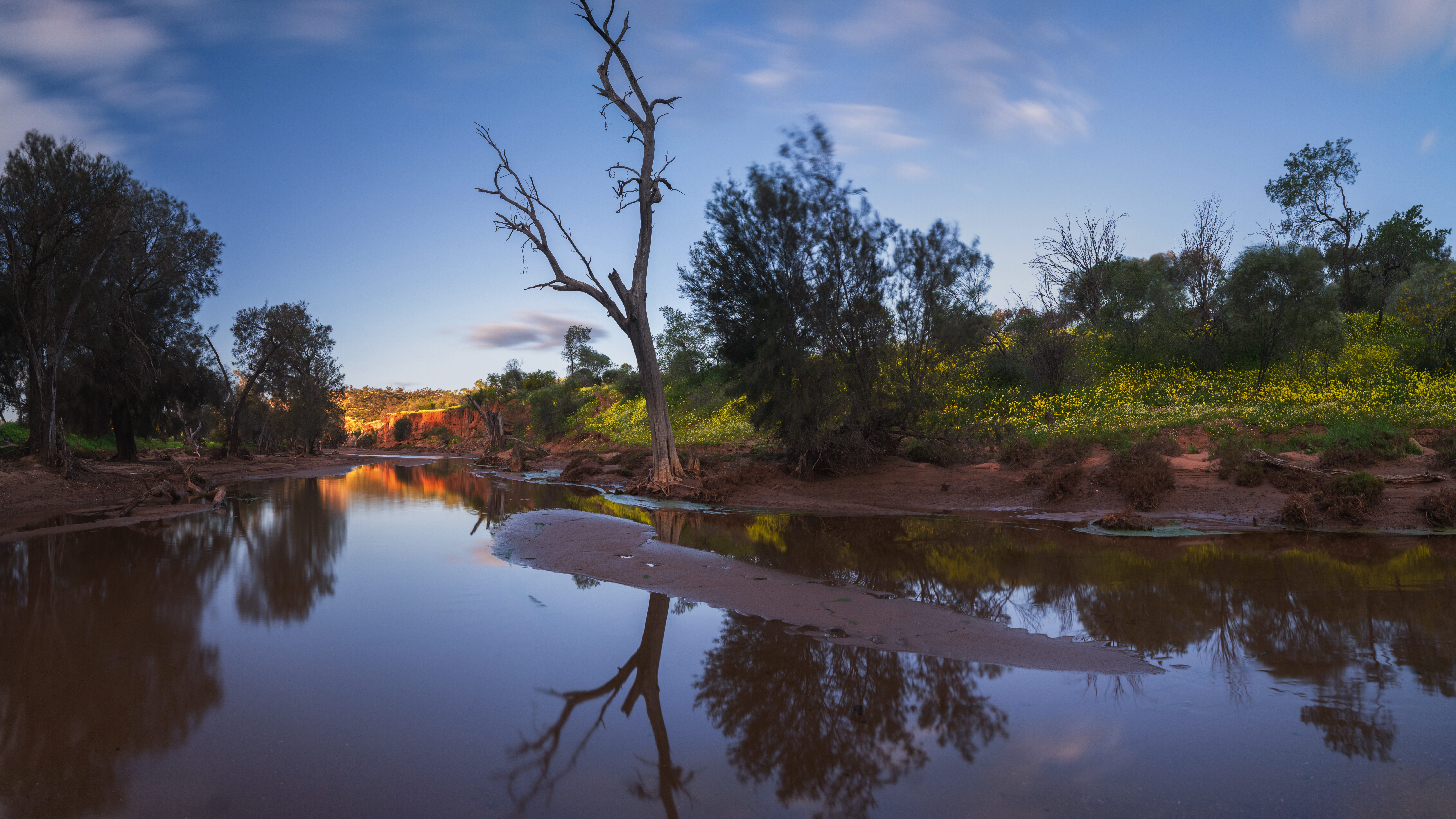
Cultural connection
Just as the wildflowers have grown and diversified in WA’s ancient soils, they’re also steeped in the land’s ancient culture. Susan Merry is a Wajarri Yamaji artist who grew up on Meeberrie Station near the Murchison River. For Susan and her sister Wendy, the wildflowers are an ingrained part of their lives and culture that represents a renewal of life in the land each year.
“After the rain and wintertime, we love the flowers. It’s lovely to see our Country like that. It just brings a lot of life to our land, it’s very colourful. Because in summertime, it’s really dry and red,” Susan says.
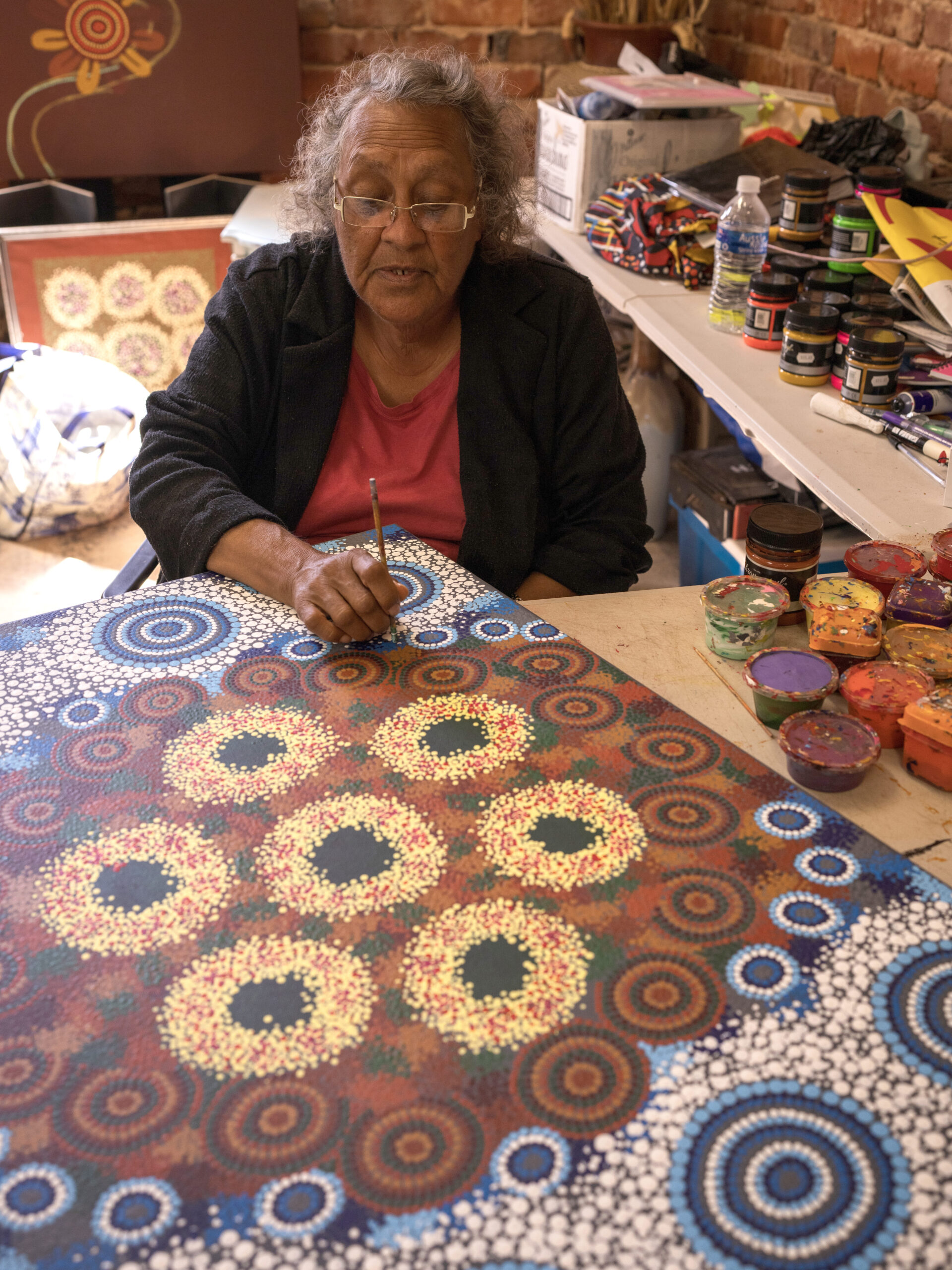
When the wildflowers bloom, it’s an annual reminder of their ties to the land and their shared history with those who came before them. “We’re connected to the flowers, the trees and the animals – the whole Country,” Susan says. “Growing up out here and living here all our lives, it connects us and our language … and it reminds us of our old people, because they had to walk and hunt through the wildflowers.”
For tens of thousands of years, First Nations peoples have drawn inspiration from nature to tell stories through art. Susan has continued this tradition. She shows me her latest work inside her art studio in Mullewa. “These are meeting places or a family gathering, and these represent people sitting around the meeting place, down on the Murchison River,” she says.
Susan rolls out an old canvas. “I’ve been painting now for 16 years … I’ve got my first painting here and I call it The Wildflowers.” The Wildflowers was the first of many wildflower paintings, from carpets of pink everlastings to the stars of the Seven Sisters shining down over wreath flowers. Susan’s beautiful art reveals the connection between wildflowers, the land and Wajarri culture.
But for Susan and Wendy, wildflowers are more than just a beautiful view. The wildflowers are a seasonal cue that lets them know the land is rich with food. “Everything, they’re all living off the wildflowers,” Susan says.
“The wildflowers tell us about certain bush tucker. The kangaroos, they feed off it and they gain weight. So it’s a good time to get kangaroos in that season, and the bush turkeys, they’re getting lots of food,” Wendy says. “And when the wildflowers come, the quandongs will have fruit soon. They’re green now, but they go really red. We make pudding out of them and we make quandong pie.”


The wildflowers are also a sign of the best time to harvest medicines, such as emu oil and bimba (a sweet sap collected from native Acacia trees). “With more rain you get more wildflowers, and you get more bimba. It’s a medicine and it’s good for the insides,” Wendy says. “We get it off lots of trees, but I say to the kids, ‘Bimba bagarn wirndangga. Wayi ngarnma yalyba warri bigayigu.’ It means: ‘The bimba grows on the trees; if you eat too much you get a tummy ache.’”
These seasonal cues demonstrate the connection between the wildflowers and WA’s nature cycles. It’s not a question of ‘if’ these flowers are an important part of the ecosystem. The question is, to what extent? And what would happen if they were lost?
Huge biodiversity
Despite their prominent role in the culture and environments of west Australia, the ecology of WA’s wildflowers isn’t well understood. But according to Dr Fiamma Riviera, a restoration ecologist and botanist with Bush Heritage Australia, there’s a simple explanation for this lack of knowledge: “There are just too many plants!” she says. “The Wheatbelt has something like 7000 species of plants, of which hundreds are not yet even described, or don’t have a proper name, let alone anything known about their ecology.”
WA’s wildflowers are simply too diverse for researchers to have a clear understanding of how the massive blooms interact with their ecosystems. But it’s evident these ephemeral wildflowers play a crucial role in the health of the land. “Obviously, such a huge display of flowers is an absolute boon for insects,” Fiamma says. “The plants need pollinators, but pollinators equally get a huge source of food for a few weeks of the year, and they then provide food for reptiles and birds and all sorts of other animals. So it’s a real time of plenty, a boom before the bust of the dry summer season.”
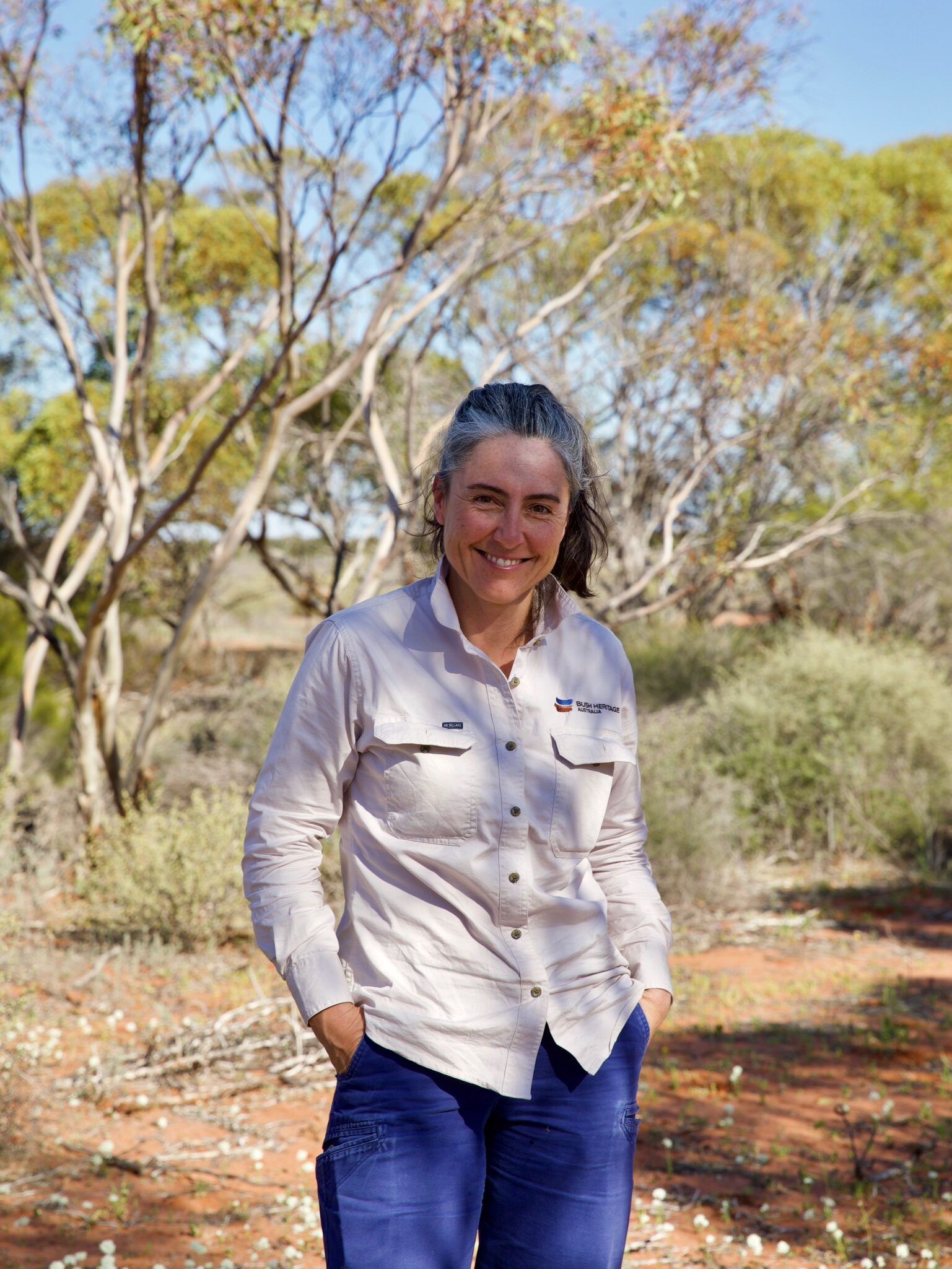
The evidence of this ‘boom’ is abundant as wildflowers transform WA’s arid landscapes. In meadows, woodland and roadside verges across the state, insects flit between flowers, while birds swoop down to catch them and kangaroos graze in the lush fields. It’s a cornucopia for the land; without such a time of plenty, this biodiversity would struggle to survive through the long, dry heat.
But each year the fields of colour and bounty across WA are being encroached upon, as different threats disrupt and degrade the wildflower ecosystems. Among the sea of splendour, slight discrepancies catch the eye; pops of colour a touch too garish, or a shade aside from what belongs there, as there are weeds among the flowers.
“The annual wildflowers rely on having lots of sunshine and space, so weeds are one of the big threats to them because they like the same habitat,” Fiamma says. Capeweed, lupins, Paterson’s curse and ruby dock all press their way in among the natives, slowly overwhelming more and more space. But weeds aren’t the only thing jeopardising the wildflowers. “The second thing is land clearing,” Fiamma says. “These nice open woodlands and shrublands that the wildflowers are associated with throughout the wheatbelt area have been extensively cleared.”
It doesn’t take long to see what Fiamma means as you drive along roads in the mid-west. In one moment, you’re surrounded by majestic woodlands and scrub, strewn with the quintessential ‘carpet’ of flowers. In the next, the clearcut felling of the landscape scorches your eyes, stretching to the horizon with canola, wheat, or barren earth in sight. Even in pastural areas that haven’t been cleared, livestock graze and tramp down the soil. “The wildflower seeds need some stable soil and if properties are overstocked or overgrazed, it’s more difficult for them to persist,” Fiamma says. “So, it’s a combination of things.”
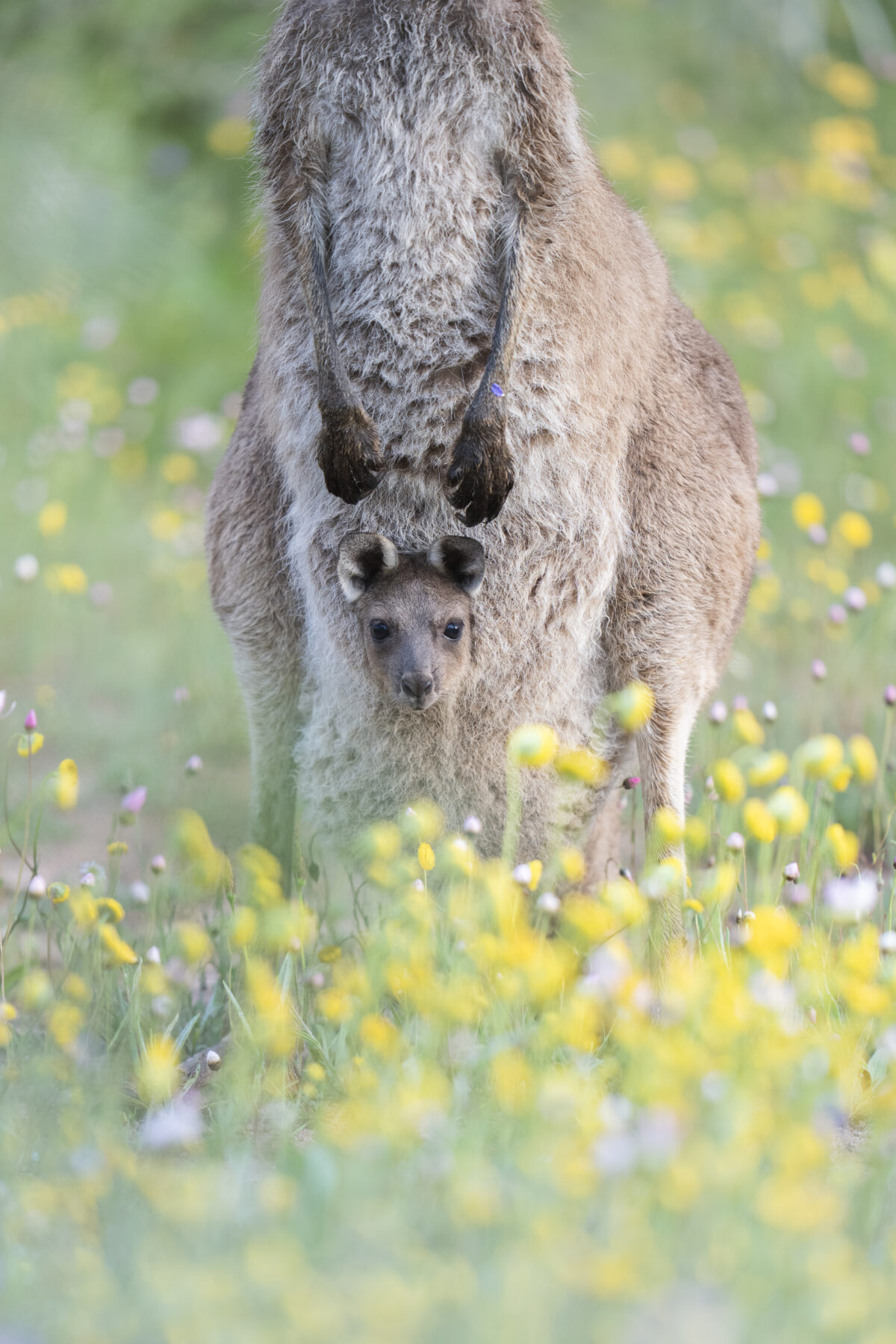
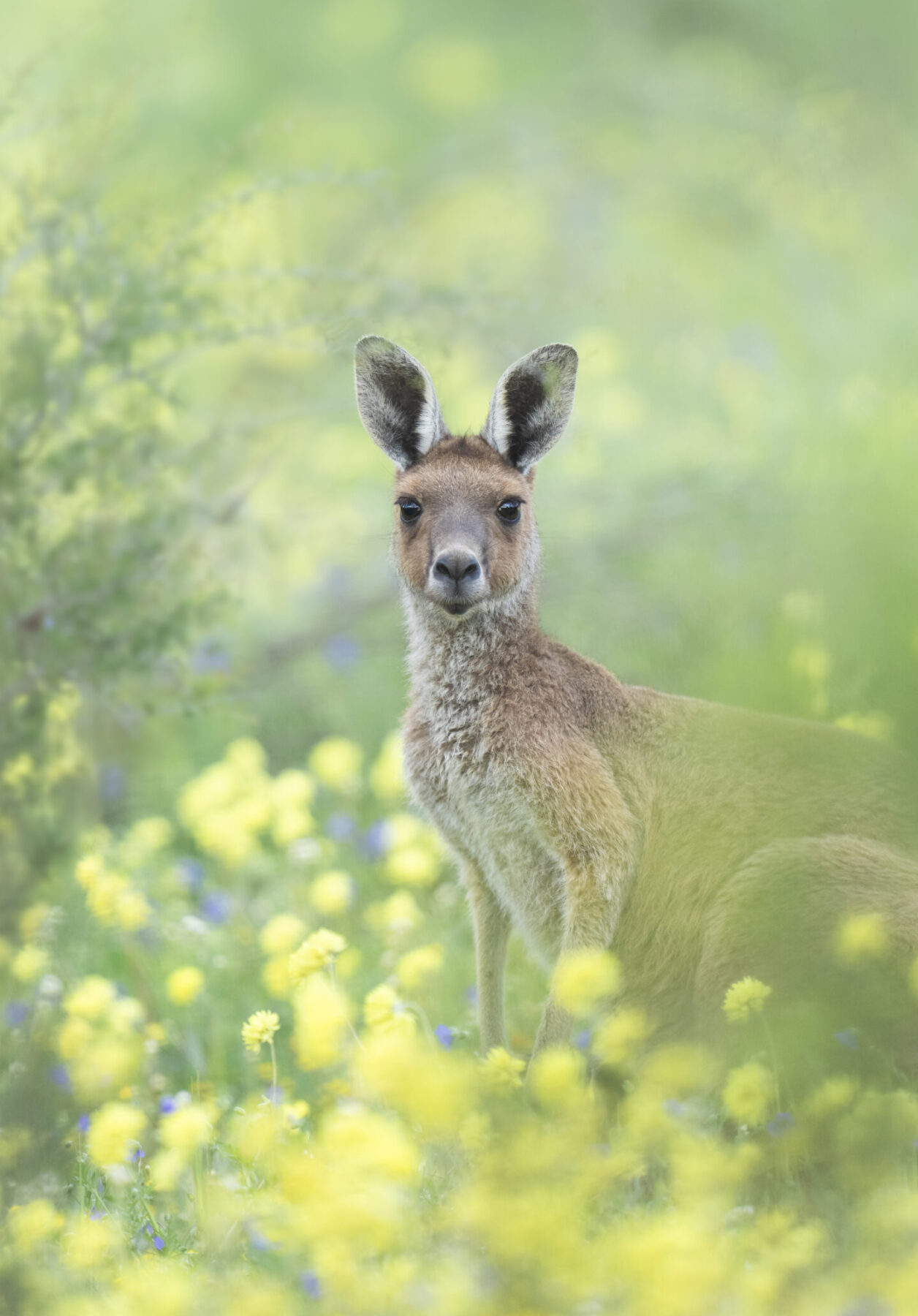
Dealing with threats
WA’s wildflowers are under pressure from all sides; grown over, cleared out and stepped on. Unless steps are taken soon, some of these floral wonders may begin to disappear. But dealing with these issues is a headache for conservationists and land managers, especially when the solutions aren’t always clear. “A big part of restoration is getting your threats under control … and that’s not easy. They’re wicked problems,” Fiamma says. “We’re hoping that through research we can answer some questions.”
On the far northern edge of the WA wheatbelt, tucked against the coast, Bush Heritage is setting up an ideal site to find those answers. Eurardy Reserve is a former pastural property that sits on the northernmost area of wheatbelt. For years, its poor soil proved unproductive for farming, meaning about 90 per cent of the property’s native vegetation was left alone, deemed not worth the effort of clearing. In 2005, when the property came up for sale, Bush Heritage jumped at the opportunity.
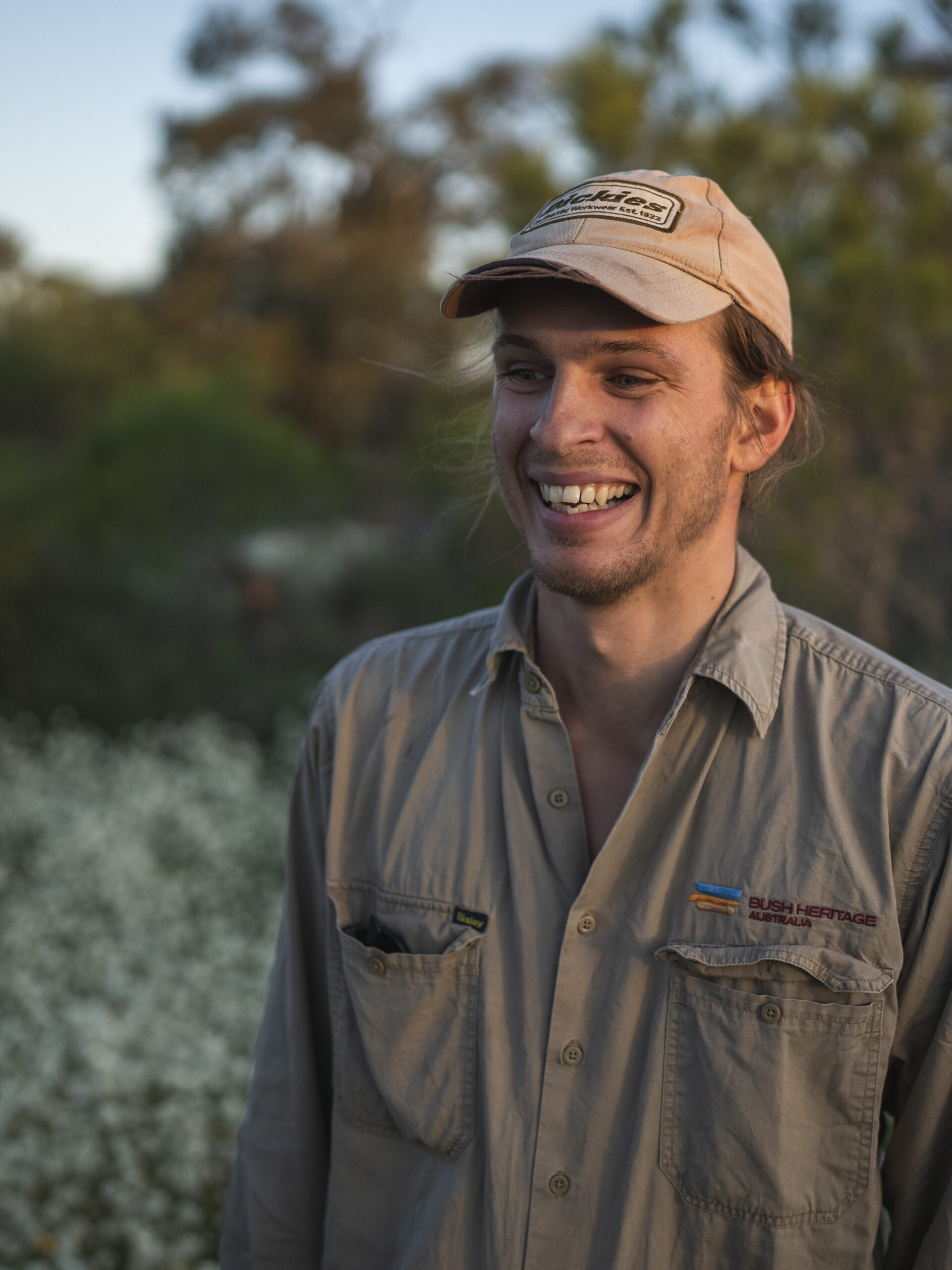
“It’s 30,000ha, of which only 10 per cent is cleared, so it’s just an amazing combination of heathlands and York gum woodlands where you get these carpets of wildflowers,” Fiamma says.
Eurardy Reserve provided an ideal opportunity to revegetate the woodlands and set up a wildflower restoration research site. The thousands of hectares that were cleared are now strewn with weeds. With fallow paddocks beside pristine remnant bushlands, Fiamma is keen to understand how to restore the health of these damaged ecosystems. “It’s going to take a while to develop, but hopefully we can find out new things about different species and what they require … and really figure out how to get more and more different species growing together with the wildflowers,” she says.
On site at Eurardy, the York gums stretch their twisted limbs towards the sky, while birds whistle and trill. But the flowers have a slow start to the day, ‘waking up’ at a leisurely pace. Sam Fischer, reserve manager at Eurardy, points out a patch of tightly closed magenta flowers. “These Calandrinia won’t open until they’ve had a couple of hours of sun,” he says. “They close up during the night.” As we walk around the site, Sam points out the rows of native trees replanted on the once-bare fields. They’re only a few metres tall but indicate the natural ecosystem is recovering. “The pardalotes are foraging in here; they’re probably not living here, but they’re starting to come in,” Sam says.
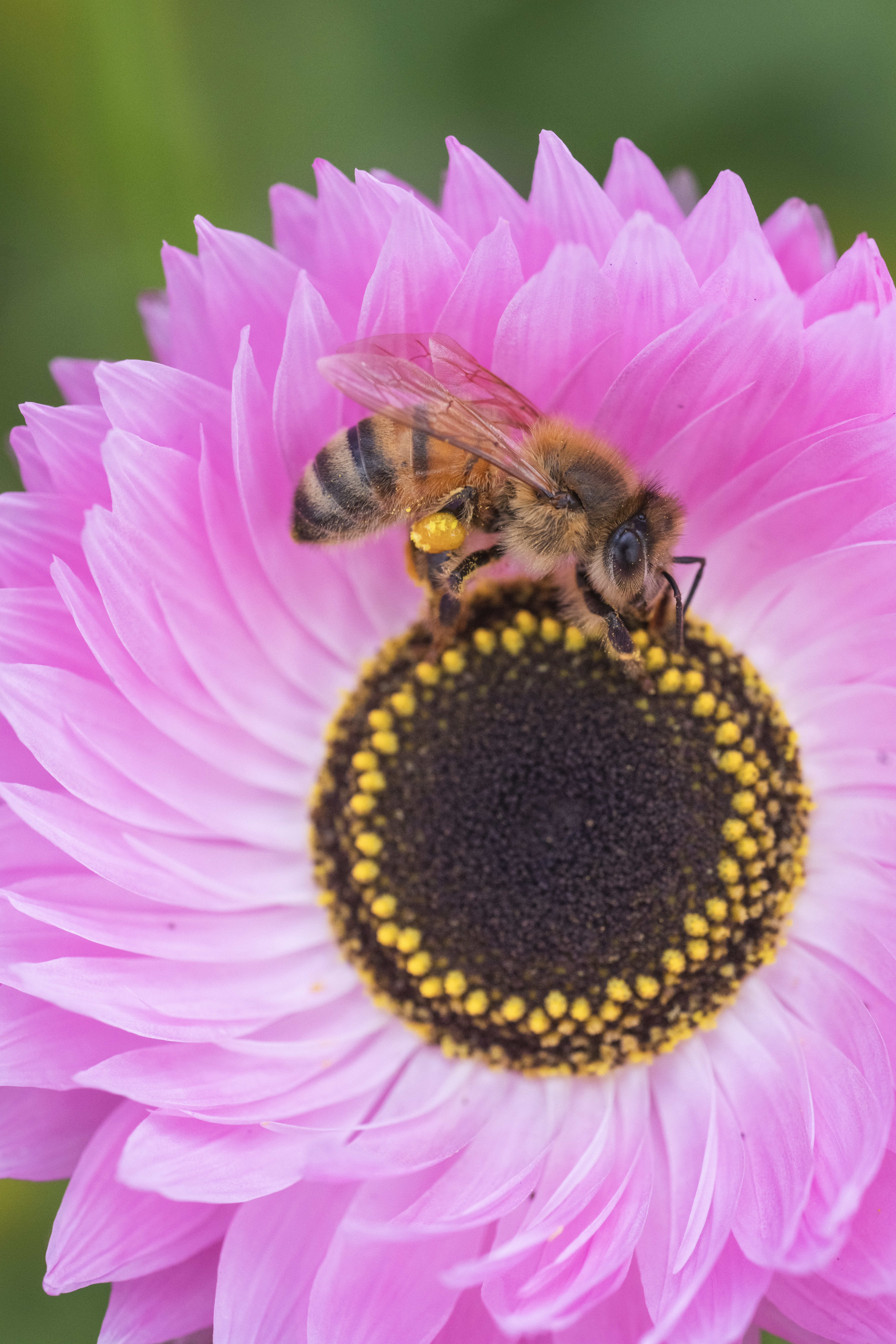
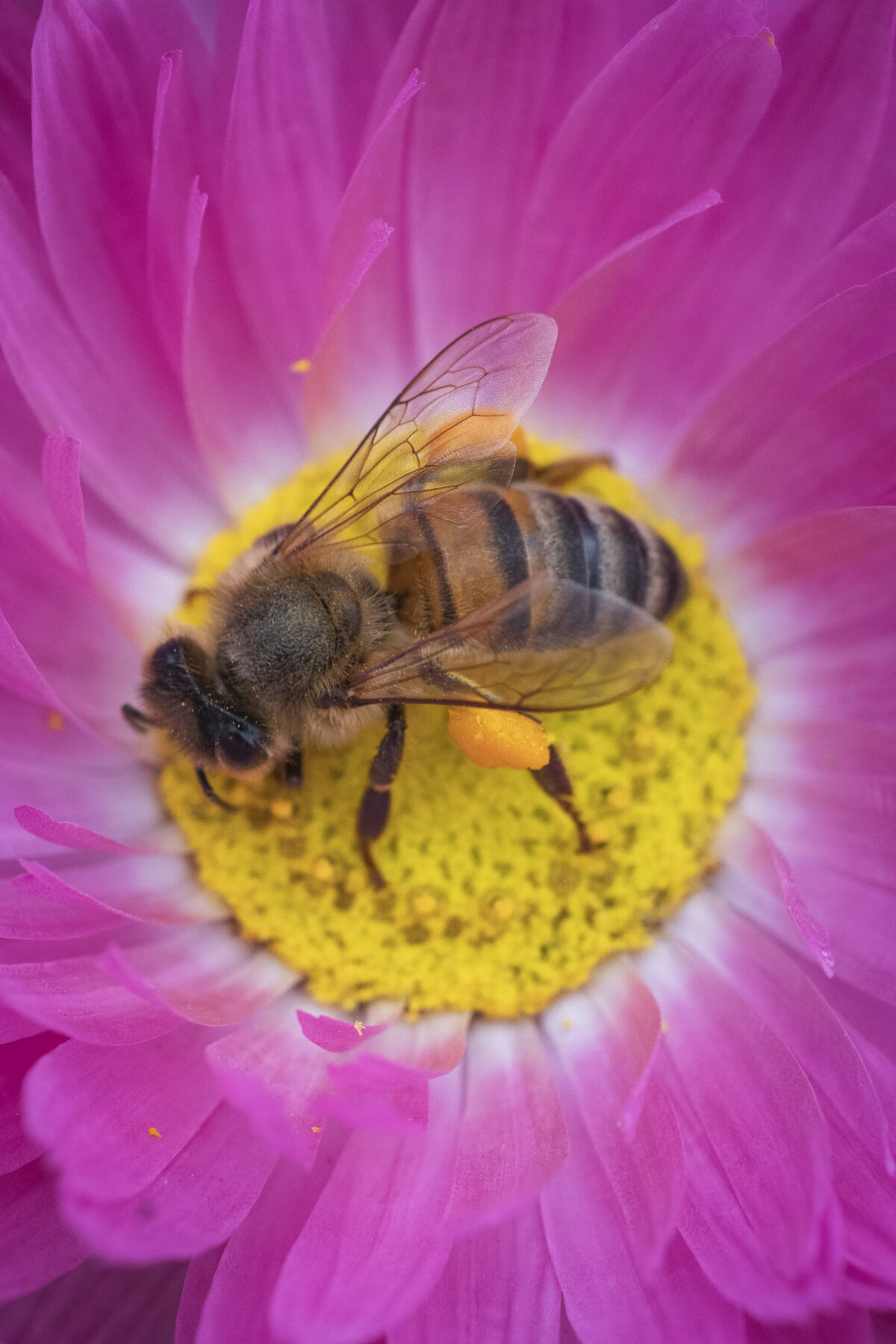
Wildflowers bob in the breeze among the fledgling trees, grown from seeds harvested in neighbouring woodlands. The small wildflowers don’t have the same visual impact as the newly minted York gums, but Sam says they’re equally important. “In the past, rehab efforts would usually just stick in one or two tree species, but that doesn’t actually help the ecology of the area,” he says. “With Bush Heritage, the aspiration is restoration, and full restoration is a massive undertaking. It’s hollows for the birds, it’s the full suite of insects and it’s the wildflowers.”
Wildflowers are part of complex and intricate ecosystems across WA. Even if those ecosystems aren’t fully understood, successfully restoring them means bringing together all the minute details that support a healthy environment. Of course, measuring restoration can be tricky when dealing with annual species. Wildflower seeds often lie dormant in the soil for years, waiting for the right opportunity to sprout, so knowing whether restoration efforts have been successful is easier said than done.
Each year the fecundity of the wildflower bloom is dictated by capricious winter rains, which are made more uncertain by climate change. In 2023, Eurardy received about 60mm of winter rainfall, followed by 300mm in 2024. This extreme swing in rainfall is reflected in the fecundity of the wildflower blooms. “Last year on Eurardy, we found one lonely, little, scraggly patch of wildflowers,” Fiamma says. “That was it. That patch had maybe 100 plants. Whereas this year, half the reserve is covered in carpets of wildflowers.”
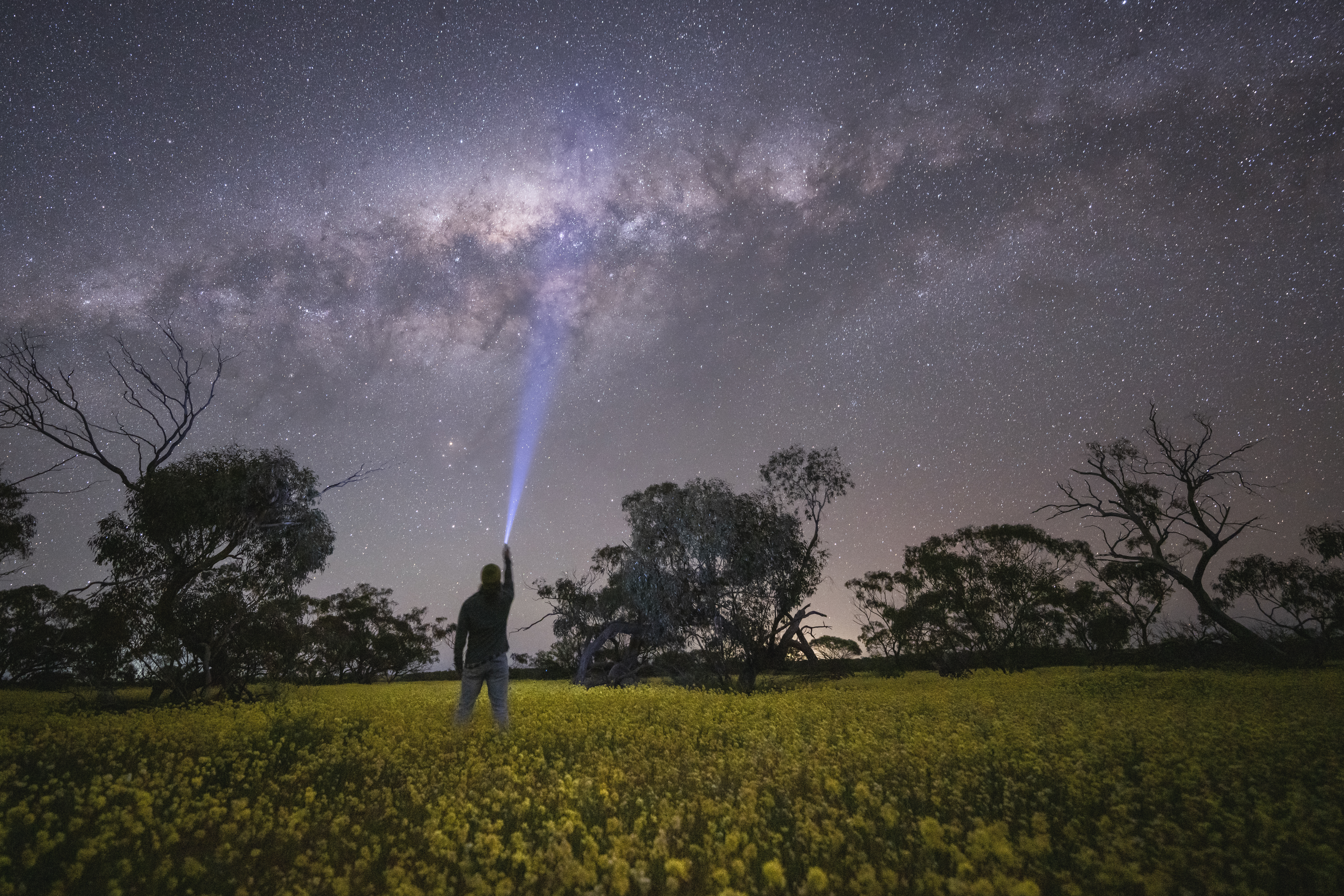
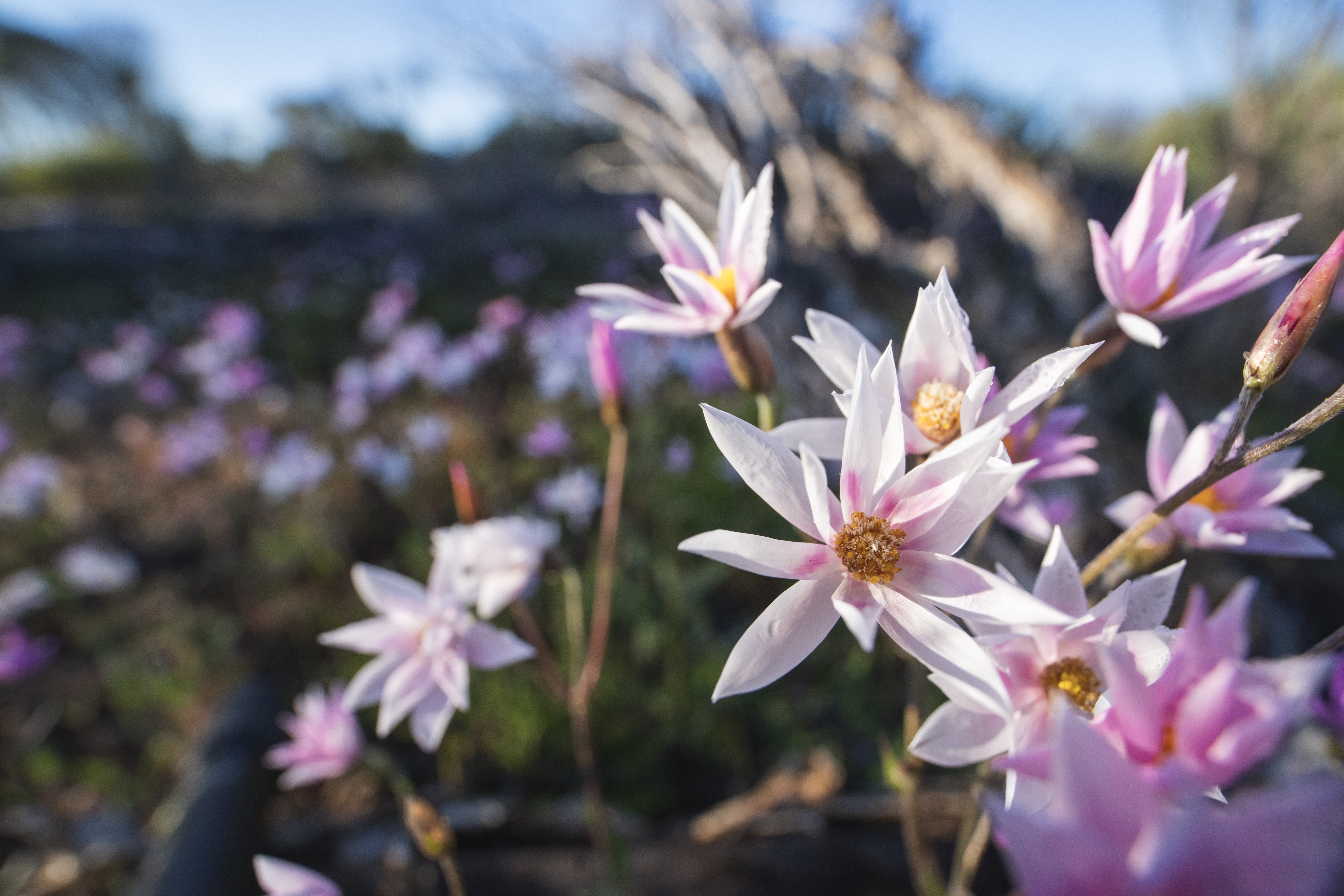
This inconsistency can make it difficult to find answers about how to restore and protect wildflowers. But Fiamma and Sam are optimistic that their efforts, and the early success of the Eurardy site, will inspire other land managers to rejuvenate and maintain the diversity of wildflowers across the state.
“We can address a gap in our knowledge and contribute to how things are done by coming up with ideas and collaborating. If we can do this and it’s not too hard, then why can’t everyone else?” Sam says.
“Hopefully, if we can show people that it’s a case of collecting a bit of seed, show them how you treat it, how you need to sow it and in what conditions, then people can create little islands from which the wildflowers can spread,” Fiamma says.
Walking around the Eurardy site, it’s easy to see why Sam and Fiamma are passionate about the project. With the wildflowers in bloom around our feet, there’s a sense that life is returning to this small pocket of the wheatbelt, one flower at a time. “With restoration, it’s about incremental improvement. It won’t immediately be a carpet of wildflowers, it’ll take time. But anything we can do here is better than nothing,” Sam says. “The project’s not going to reach its goals in my tenure or in the next manager’s tenure. You’ve really got to play the long game.”


A wonder of nature
It’s hard to imagine what this landscape once looked like, given that the remaining pockets of wildflowers produce so much splendour. Imagine a sea of colour that continues for thousands of kilometres, with new pigments emerging as the season progresses. WA’s wildflowers are a wonder of nature. But it’s not enough to celebrate these blooms; we must conserve these places and protect them like the treasures they are.
“If we want to maintain the diversity of the flora that we have, be it the everlastings or the eucalypts, or the banksias and grevilleas, we’ve got to maintain a good representation,” Brett Loney says. “Once you get down to less than 30 per cent of vegetation cover, the loss of species increases exponentially because they don’t have the support of the diversity around them … Gradually, those species get weaker and weaker until they just don’t exist anymore.”
The loss of the wildflowers would be crushing. No one wants the annual bloom to become a story of how WA used to be. But the wildflowers are hardy; they know how to survive in WA, they just need to be given the chance.
“I always have an appreciation of the resilience of vegetation in WA,” Fiamma says. “If you just give it a little nudge, it can hold on.”
The wildflowers are essential to WA, not only because of their ecological significance or cultural prominence, but in the truest sense of the word. They are a fundamental essence of the land, a defining feature of the Wildflower State.
The wildflowers’ colours embolden with the setting sun. It’s nearing the end of their season, but these plants will continue to beautify the landscape until their cycle renews.
